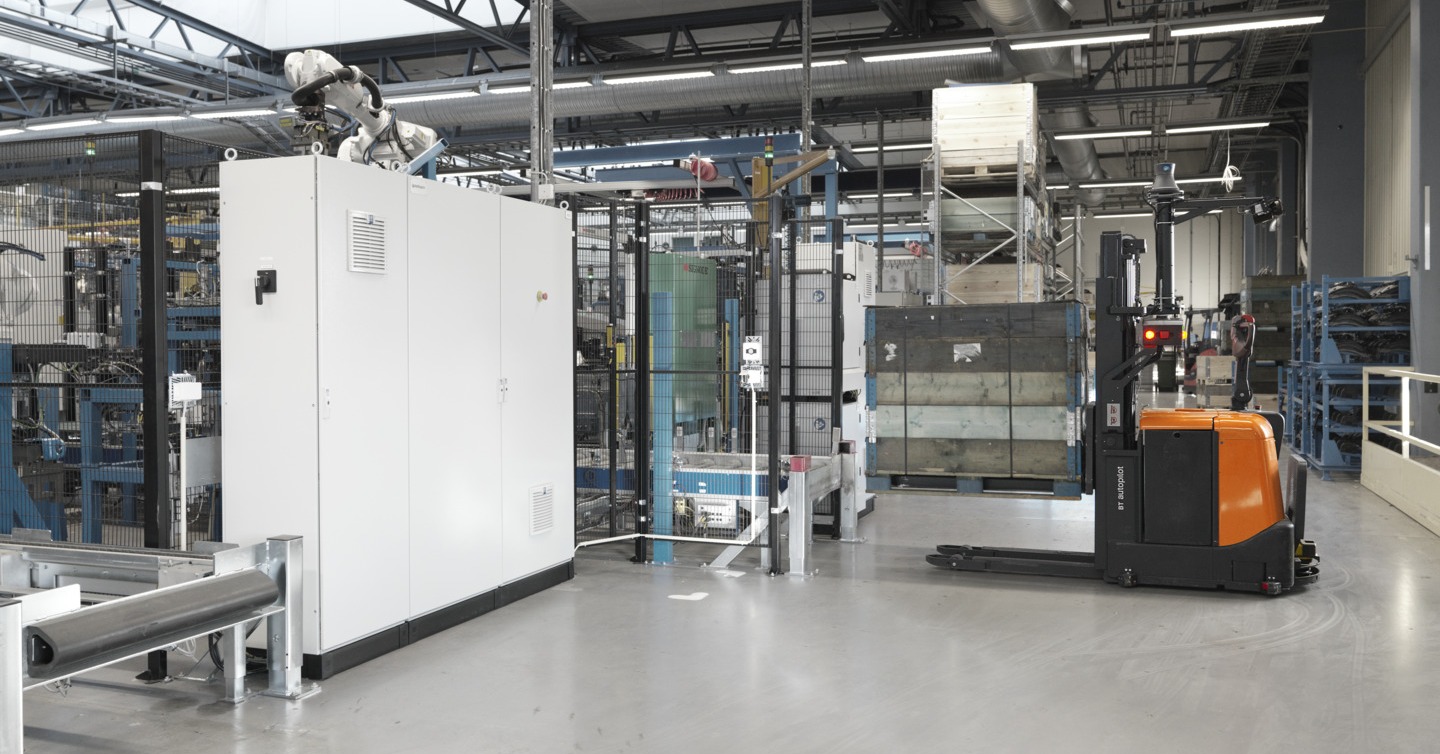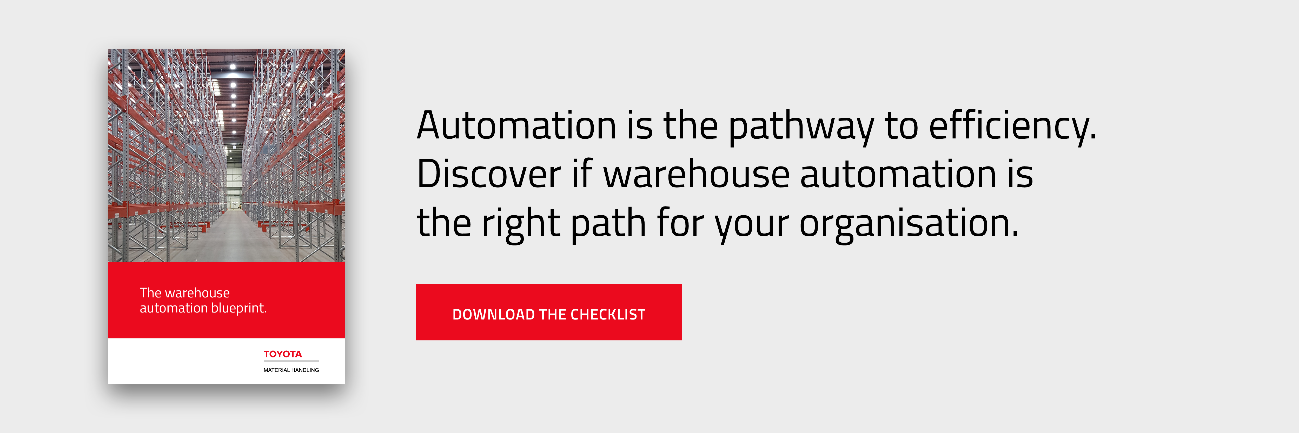The demand for eCommerce items increases year upon year. This means manufacturing and distribution centres are being rushed off their collective feet to satisfy the needs of the everyday consumer. To balance that demand, we see warehouse optimisation and automation as methods to amplify the output within traditional warehouse settings. But are we seeing the same in picking?
Any successful manufacturing or distribution process requires picking, where individual items make their way from fulfilment areas to shipping areas and, hopefully, all the way to the customer. However, picking is an area of contention. It can cause issues for warehouses and businesses due to human error risk that exists in the process. There is also a wide variety of external influences that predetermine how picking is carried out, such as:
- The size of your facility.
- The quantity or frequency of orders.
- Labour capabilities.
- The level of SKUs in stock.
- Whether automated guided vehicles (AGVs) are being utilised within the process.
So what kind of strategies can you undertake to improve the warehouse picking process?
- Warehouse picking best practices.
- The top four warehouse picking strategies.
- Why implement one of these strategies?
Warehouse picking best practices.
While there are various standardised picking methods being utilised today, they can always be achieved more efficiently. Making the most of a strategy is a way of reducing waste, downtime and overheads. Here are our top considerations for how to improve your warehouse picking process.
Optimise the layout of your warehouse.
Whether you are in a manufacturing facility or distribution centre, are you making the most of your space? In warehouse space, there is value. Some ways of organising a warehouse are more efficient than others, with the most logical layouts optimising workflows and movement of goods.
Consider how you can improve your picking routes, the locations of your storage areas and how they are set up, your loading areas, your reception areas and other critical parts of the warehouse.
Analyse your performance.
By analysing the performance of your picking (alongside all other key processes), you will discover which areas are performing well and which need optimising to reduce obstacles or bottlenecks. You can track metrics such as:
- Time to ship.
- Total units in storage.
- Picking accuracy.
- Warehouse capacity.
- Inventory turnover.
Utilise a warehouse management system (WMS).
WMS software aids warehouse management by automatically generating picking lists and display the available inventory on a real-time basis.
This helps pickers see the status of orders as and when they come in, helping forecast when demand will increase. Management can use a WMS to plan what labour will be needed and when.
Utilise automation capabilities.
Automation onboarding is one of the most innovative and increasingly important inclusions for warehouse picking (and warehouse management in general). An automated warehouse truck transports large quantities of picked goods in line with what is needed or what a WMS dictates. Conveyor systems allow quick and easy sorting. SKU numbers and inventory scanners improve the visibility over inventory.
We recommend automation to frame the entirety of warehouse optimisation, where it acts as both an impetus to further change and a solution for current problems.
To find out more about the possibilities of automation within warehouses, read this blog post.
The top four warehouse picking strategies.
There are four commonly-used picking strategies, which work in specific warehouse situations. You can use the above best practices to improve your use of any of these strategies.
1. Discrete picking.
This is considered to be the least complex warehouse picking strategy, as it entails one worker working on one order at a time. This individual will manually retrieve every SKU that the order necessitates.
The environment it suits.
Discrete picking is most likely found in small businesses with smaller order and SKU numbers. While it takes more manual movement, it does not necessarily require multi-order SKUs to be retrieved in one batch.
2. Batch picking.
Contrary to discrete picking, batch picking requires a picker to retrieve many of the same SKU for different orders, such as popular items being shipped to many places. Pickers stay in the same place for some time.
The environment it suits.
Batch picking can be found in all sizes of business, but will most likely be seen in larger organisations with more warehouse space. Warehouse automation solutions, such as conveyor systems, allow pickers to move large volumes of the same SKU quickly and efficiently, rather than walking back and forth.
3. Zone picking.
With zone picking, pickers are designated to work within specific areas that they will not leave, only picking SKUs in that space. It is a little like a disjointed assembly line, with specific people carrying out specific tasks.
The environment it suits.
For warehouses that fulfil complex orders, the zone picking strategy is the best choice for maintaining efficiency.
However, this strategy requires a specific warehouse layout, where fewer in-demand SKUs are separated from those with a high inventory turnover. To learn more about warehouse layout and optimisation strategies, head to this blog.
4. Wave picking.
Our final picking strategy is actually a variation of either zone or batch picking. Instead of orders and picking being assigned chronologically based on how they come in, item picking is based on the optimal ‘wave’ of orders that can be grouped and prioritised. This is based on how important those orders have been evaluated to be.
The environment it suits.
Wave picking works very effectively for warehouses with a large and complex number of varying SKUs and order types. It works through schedules influenced by how labour, shipping dates, delivery times and product location falls.
Why implement one of these strategies?
Picking is labour-intensive, prone to human error and a loss of accuracy. So what do these warehouse picking strategies bring to a business?
- A reduction in costs: As you automate and streamline a picking process, there is less room for mistakes and better organisation of labour, based on the knowledge of demand and how a warehouse’s layout can be optimised.
- Increased picking performance: Optimised routes, automatically-generated orders, inventory tracking and automation guarantee pickers find their jobs far easier to complete. Not only will picking get faster, but far fewer mistakes will also be made. This helps reduce waste across the board.
- Increased customer satisfaction: With fewer incorrect orders and faster delivery times, customers will find a much greater source of satisfaction from your work.
Considering automation as a route towards efficiency?
As mentioned in this post, automation is one of the key ways businesses can improve their warehouse efficiency.
However, automation is not universally applicable, only suiting warehouses with specific scenarios. To help you discover whether your scenario is right for the advantages of automation, download our automation checklist today using the button below. Or you can click here to view our LLOP truck range.

